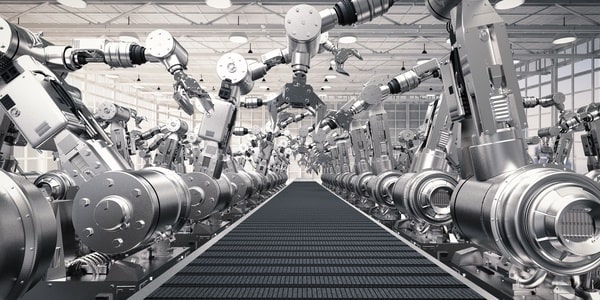The following is taken from a whitepaper we recently published. You can download the full article here. It includes 5 additional resilience building methods not included in this article.
Last month we developed resilience plans for a multinational manufacturing organisation. The client had a specialist insurance issue to resolve, namely the treatment of clear geopolitical risks affecting their factory operations in North Africa. We found that the semi-automated production lines were relatively quick to reinstate, generally between 4 and 10 weeks, whereas some robotised lines had a replacement lead time estimated at 18 months or longer.
Robots represent a source of enterprise risk that will be familiar to most heavily invested automated manufacturers. Our recent work has focused on building resilience into such organisations in different ways.
Below are 5 methods we use for reducing the risk in a manufacturing organisation.
1. Develop adaptive capacity
Organisations often specialise, follow different growth paths and can be driven in different directions according to strategy, situation or fortune. For example, an opportunity arises to buy out a competitor, acquiring their customers and production facilities with a view to gradual transference. Over time the pattern repeats and there comes a point where there are multiple similar but non-identical plants producing differently branded goods. Commercially sound, but technically impossible for any disrupted factory’s capacity to be transferred to another within the group in less than 6 months without massively disrupting the receiving operation. The fact there are four or five plants in the same position increases the risk of an incident with none able to recover capacity elsewhere. Inevitably, the decision to adapt comes down to individual businesses’ pragmatic working constraints and cost-risk appetite.
2. Create shared capability
We recently assisted an organisation whose investment in each of its five regionally distributed sites meant that lost capacity or surges in demand could be switched or spread to other sites without affecting customers. The sites are not operationally identical, but each has practised procedures to re-prioritise, re-configure and switch from two shifts to three, creating capacity to build-in resilience. They have systematically standardised equipment across plants and separated duplicate lines so no plant remains a single point of failure. The unionised workforce is bought-in and participative, seeing their employment protected and consequently accept the need to be periodically transported by bus between sites for practice drills.
3. Manage single points of failure
Of course, an organisation can choose to accept any level of risk set within its governance framework and for many, having a unique piece of plant is viewed primarily as a bottleneck to production and secondarily as a risk concentrator. However, this is less about double-spending for the sake of resilience, and more about controlling any concentrations that arise. They come about both intentionally and accidentally and it’s important to have scanning and risk management procedures in place to detect and deal with each. We regularly construct dependency models to help identify vulnerabilities like this, reflecting changes as they occur and reviewing periodically to determine if any single asset places business at unacceptable risk.
4. Control stock and supply
It makes sense to reduce raw materials supply chain latency, releasing the value that might otherwise be tied up in stockpiles at every stage or in transit. However, there are other perspectives; consider a port terminal solely responsible for receiving and shipping coal and biomass from around the world to feed power stations supporting the national power grid. When fuel runs out, the station must be closed, reducing national stability; the situation cannot be allowed to arise. The question then, is where should stockpiles be held and how large should they be, since clearly there are practical limits. The fact is, small disturbances in supply do occur, not least due to weather, scheduling and transport glitches and stockpiles offer an economic cost-risk buffer. Would it work in a sustained outage? Almost certainly not, however it buys the time needed to decide, communicate and prepare.
5. Anticipate procurement and consignment stock
Some critical aspects of production have intermediate life-cycles, falling between fast-flow raw materials and long-term invested plant. Examples include tooling and sub-assemblies characterised by significant expense, variable specification and long lead times, begging the question as to how many – if any – we or the supplier should hold as spares. Two examples spring to mind; in the first, bespoke tooling with a 6 to 12-month lead time where re-ordering every 6 months is a near-given, yet neither supplier nor customer holds stock and the only buffer lies in the residual lifespan of the tool. In the second, a warehouse holds completed household goods at the suppliers’ expense and risk ready for near-constant call-off by the customer, however this is a contracted requirement. In fact, to my mind the two situations would be better reversed, since the capacity of the warehouse buys just a few days, whereas the availability of replacement tooling in an emergency could save 12 months’ production.
Download the whitepaper for 5 more |

